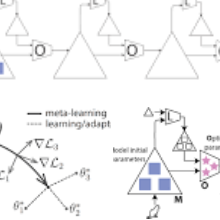Meta-learning is an effective method to handle imbalanced and noisy-label learning, but it depends on a validation set containing randomly selected, manually labelled and balanced distributed samples. The random selection and manual labelling and balancing of this validation set is not only sub-optimal for meta-learning, but it also scales poorly with the number of classes. Hence, recent meta-learning papers have proposed ad-hoc heuristics to automatically build and label this validation set, but these heuristics are still sub-optimal for meta-learning. In this paper, we analyse the meta-learning algorithm and propose new criteria to characterise the utility of the validation set, based on: 1) the informativeness of the validation set; 2) the class distribution balance of the set; and 3) the correctness of the labels of the set. Furthermore, we propose a new imbalanced noisy-label meta-learning (INOLML) algorithm that automatically builds a validation set by maximising its utility using the criteria above. Our method shows significant improvements over previous meta-learning approaches and sets the new state-of-the-art on several benchmarks.
翻译:元学习是处理不平衡和吵闹标签学习的有效方法,但它取决于包含随机选择、手工贴标签和均衡分布样本的验证集。随机选择和手工贴标签以及平衡这一验证集不仅对元学习来说是次最佳的,而且与年级数量相比也不成比例。因此,最近的元学习论文提出了自动建立和标注这一验证集的临时性杂交杂交法,但这些杂交法对于元学习来说仍然是次优的。在本文中,我们分析了元学习算法,并提出了新的标准,以说明验证集的效用,其依据是:(1) 验证集的信息性;(2) 集的分类分布平衡;和(3) 集的标签的正确性。此外,我们提出了一种新的不平衡的杂交标签元学习算法,该算法通过使用上述标准优化其效用而自动建立一套验证。我们的方法显示对以前的元学习方法的重大改进,并在几个基准上设置新的状态。





